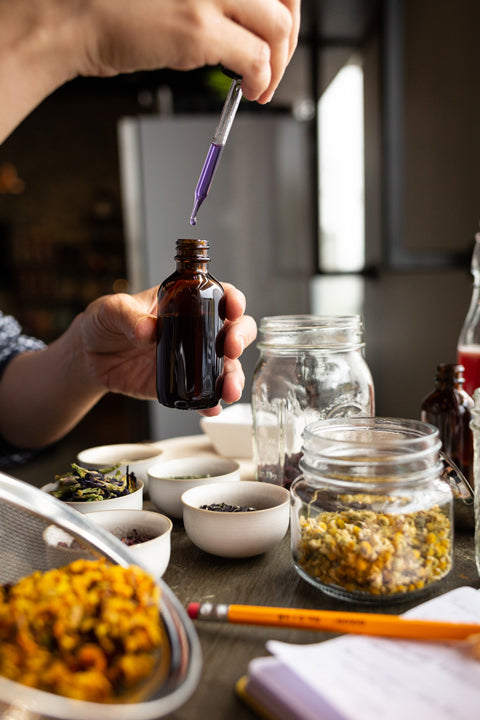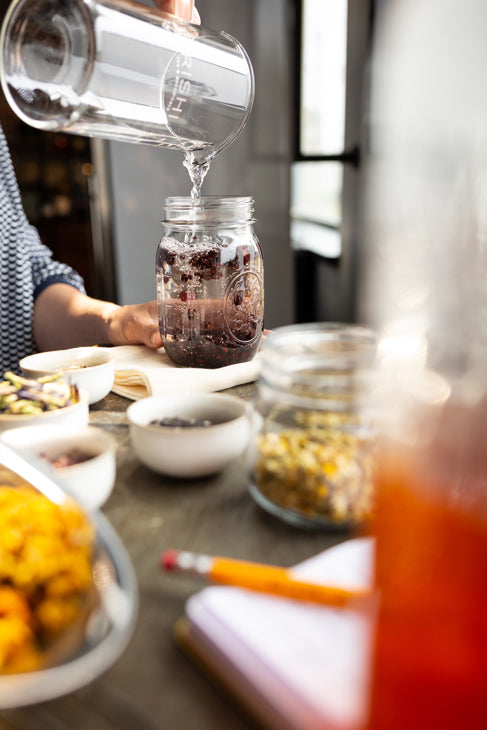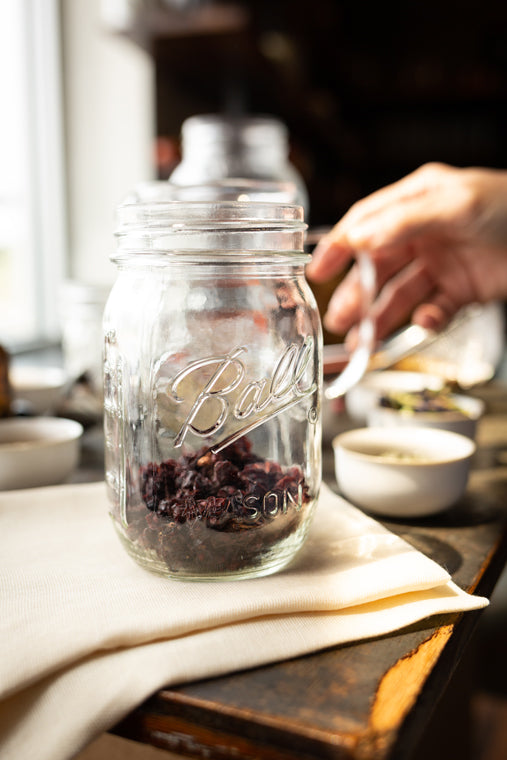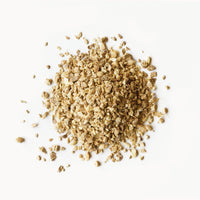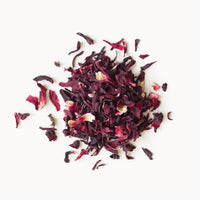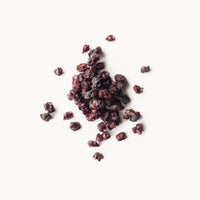What are you looking for?
Search
How To Make Tinctures
Tinctures
Tinctures are best defined as concentrated herbal extracts. However, for an extract to be considered a tincture, the solvent (also called a menstruum) used must be alcohol. Typically, herbalists prefer to use a neutral spirit to make tinctures.
Tinctures are employed by wellness practitioners similarly to supplements. They are shelf stable and easy to take. You can use directly from a dropper or dilute the tincture in tea or water. Tinctures can also be used in mixology like bitters (as bitters are typically a type of tincture).

